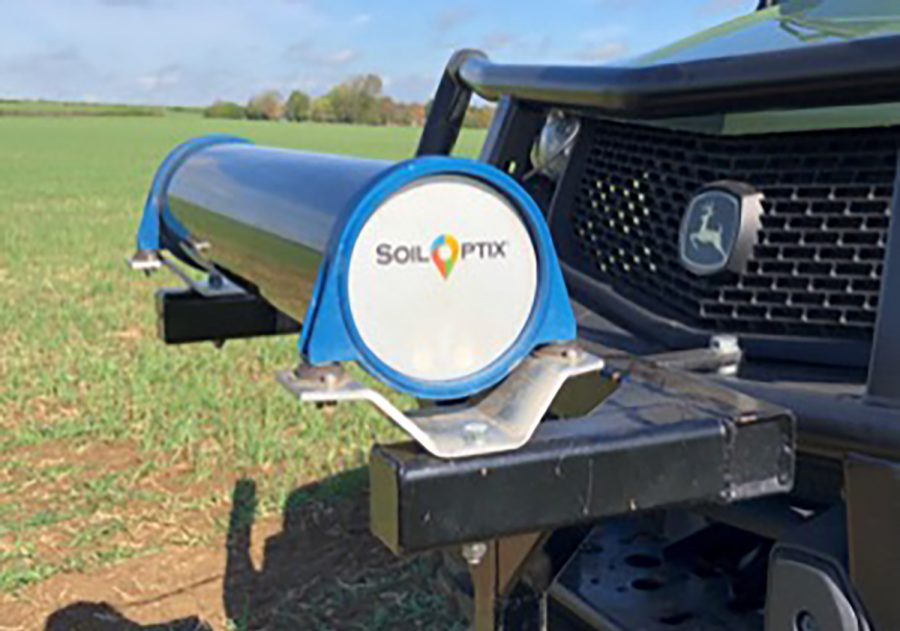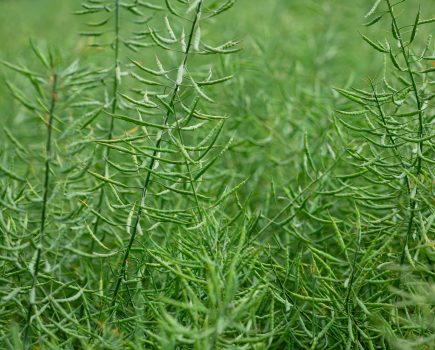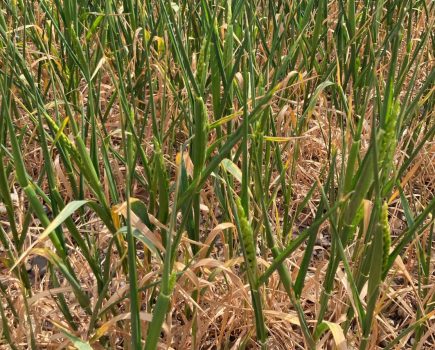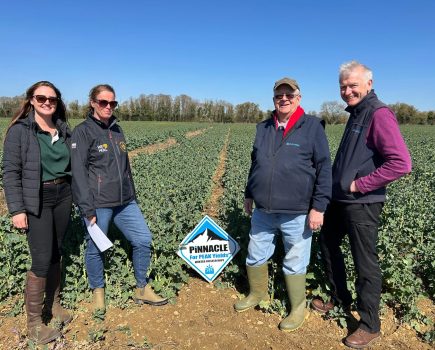TerraMap Gold is a new, and unrivalled soil nutritional and management service from Hutchinsons that combines the most comprehensive soil analysis with the most accurate soil mapping.
“TerraMap Gold is a premium service of TerraMap that will interest growers who want an even better understanding of why the soil behaves like it does and its influence on crop performance, allowing for the most informed soil management decisions to maximise farm profitability,” explains Ian Robertson, Hutchinsons head of soils.
Methodology
The launch of TerraMap by Hutchinsons in 2019 revolutionised the way soil nutrient mapping was carried out; TerraMap uses gamma-radiation detection technology to deliver resolutions of over 800 points/ha, providing high definition mapping of all common nutrient properties, pH (e.g. % clay, % sand, % silt), soil texture, organic matter and CEC as well as elevation and plant available water.
The TerraMap methodology collects data in 2 very simple steps; scanning by driving a light weight all terrain vehicle fitted with the sensor over a field, and then taking soil samples to allow for each scan to be used to create the individual map layers.
“The difference with TerraMap Gold is that once the mapping is done, the system collects much more detailed soil samples, analysed through the Hutchinsons Healthy Soils Gold soils analysis, rather than the standard soil sample analysis,” says Mr Robertson.
The Gold Level soil test is a proven service that offers an in-depth soil analysis of all the key macro and micro soil properties and forms the basis of the Hutchinsons Healthy Soils Service.
“31 different elements are analysed by the Gold soil test, which makes it an ideal partner for the high-resolution data of TerraMap. The benefit of this increased level of data collection is the ability to make much more highly informed decisions about how to manage the soils more effectively,” he says.
TerraMap Gold offers much more in depth information such as:
Buffer pH layer
“This is a different measure to the normal water pH and indicates how much reserve acidity there is in the soil, or what the resting pH of the soil is likely to be,” explains Mr Robertson.
“This is very important in understanding how nutrients cycle in the soil; phosphorous is key and has a peak cyclability between pH 6.2 and 6.8. If the buffer pH is outside these values, then the phosphate management policy needs to be carefully considered. So for example, if the field displays a large variation in buffer pH, this would mean that two phosphate management plans are required to optimise phosphorous utilisation.”
“TerraMap Gold service also offers Cation exchange capacity and soil texture data, mapping out the soil’s ability to hold, store and exchange nutrients, as well as understanding the soil’s bulk density.”
“This highlights potential structural issues, allowing for informed management decisions around cultivations and cover crops,” he notes.
Nutrient reserves and availability
Mapped layers produced from TerraMap, show the total nutrient reserves and plant available levels of all the macro elements. These are expressed in kg/Ha, which makes for much easier understanding and building of nutrient requirements for different cropping situations.
“There may be significant differences between the total reserves and the actual plant available nutrients, which are generally caused by one of the numerous nutrient interactions within the soil,: says Mr Robertson.
“However, as TerraMap Gold measures 31 parameters it allows for better understanding of these interactions and how to manage them for peak soils contribution. “
Structure and cultivations
“We know that relationships between the chemical elements in soil reserves can have a distinct effect on soil structure and workability,” he says.
“Couple this with soil texturing and organic matter content, and it can really help in making decisions about suitability of soils to different cultivation methods.”
“Regardless of cultivation methods applied, low calcium, high magnesium soils are always likely to retain moisture and be difficult to work and the clay and silt elements in the soil’s texture further help to predict the soil’s behaviour. Within TerraMap Gold, these are all measured and allows for the planning of cultivation strategies in conjunction with bulk amendments to optimise the soil’s structure.
The TerraMap Gold test includes:
- Active (water) pH
- Buffer pH
- Soil texture
- Organic matter
- Organic carbon
- P, K & Mg indices
- Boron, Manganese, Iron, Copper, Zinc, Molybdenum (total), Cobalt, Chloride and Sulphur (sulphate)
- Total reserves of P, K, Mg, Ca, Na, S and Mo
- Exchangeable cations (Ca, Mg, K, Na, H)
- Cation exchange capacity
TerraMap Gold will be available at Groundswell and Hutchinsons Helix and Regional Technology Open Days this summer. For more information visit www.Hutchinsons.co.uk/events







